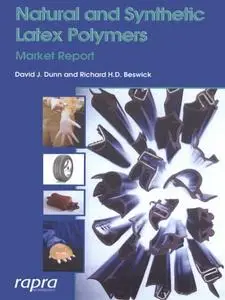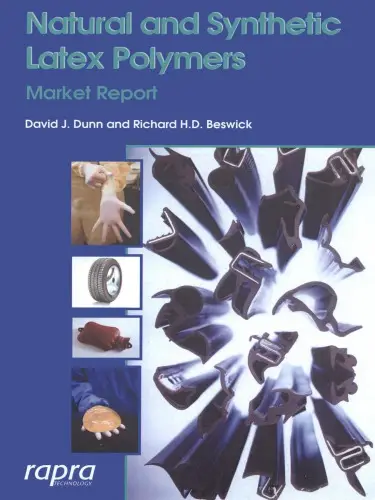R. Hd Beswick, D. J. Dunn, "Natural and Synthetic Latex Polymer Market Report"
English | 2002 | ISBN: 1859573606 | PDF | pages: 142 | 8.1 mb
English | 2002 | ISBN: 1859573606 | PDF | pages: 142 | 8.1 mb
This latex market report gives a comprehensive introduction to both natural and synthetic polymers in one volume. This is a hot subject because of the tremendous changes in the market. These have arisen from the increased use of disposable gloves in the medical industry and the search for elastomers which do not promote allergic reactions. Also latex products are being used extensively as alternatives to solvent based systems such as adhesives, sealants and coatings, because of global legislation concerning the use of volatile and flammable solvents. The range of applications of latex is extensive. Polymer latices are used in paints and coatings, textiles, non-wovens, packaging, construction (mainly in adhesives and binders), furniture, packaging, paper (e.g., coatings), medical equipment, personal protective equipment, carpet backing, adhesives, polish, belts, seals, etc. The global annual consumption of natural rubber latex is running at just over 7 million tons. Natural rubber latex is particularly widely used in medical gloves, thread and condom applications. Gloves are by far the largest market sector, consuming around 60 percent by weight. and the need to protect healthcare workers from infection. Production quality must be high to eliminate pinholes and provide an adequate barrier. This is a very competitive market and much of the production industry has been moved to Asia to reduce costs. This in turn has lead to new standards being introduced, such as the Standard Malaysian Gloves (SMG). Natural rubber latex is discussed in depth in this report from cultivation practices to manufacturing methods and new developments. Allergic reactions have been reported to residual proteins in latex. The nature, incidence and potential market impact of this are discussed. Attempts are being made to replace natural rubber with synthetics, but currently this is not generally cost effective. The key properties of natural latex are described in the report. A wide range of synthetic latices is available including styrene-butadiene copolymers (SBR), acrylonitrile-butadiene copolymers, polychloroprene, acrylic polymers, vinyl acetate polymers, vinyl acetate-ethylene polymers, vinyl chloride polymers and copolymers, polybutadiene and polyisoprene. consumed globally each year. This report describes production methods, applications and markets. The worldwide structure of the latex industry is outlined here. The natural rubber industry in Asian countries, North America and Europe are described. Asia is the key area for production. The latex market is spread across the globe, making it less sensitive to regional fluctuations and economic cycles. Application areas are growing with the requirements for medical gloves and condoms, and the use of latices as substitutes for solvent based systems. This Rapra Natural and Synthetic Latex Polymers Market Report provides an excellent, clear overview of the whole of the latex industry from production and manufacturing methods to market applications, new technology and potential for growth.



